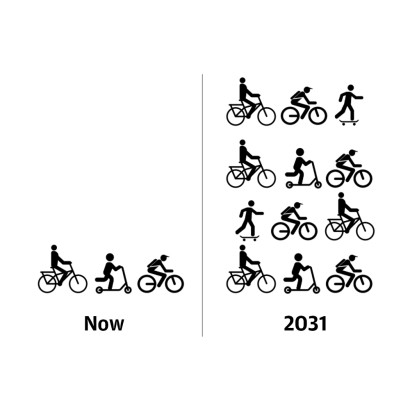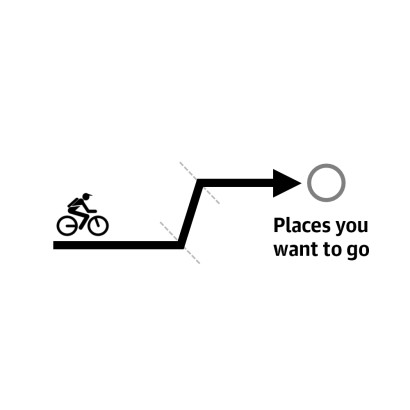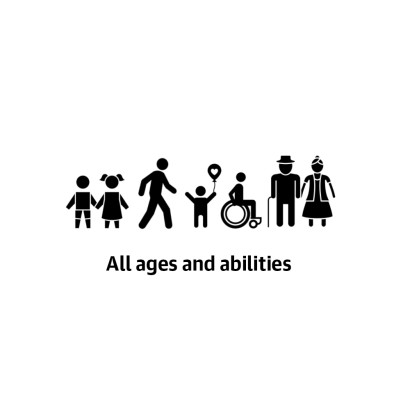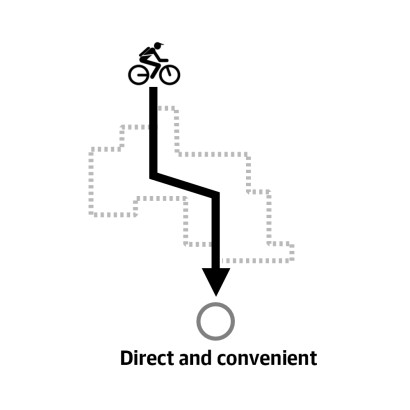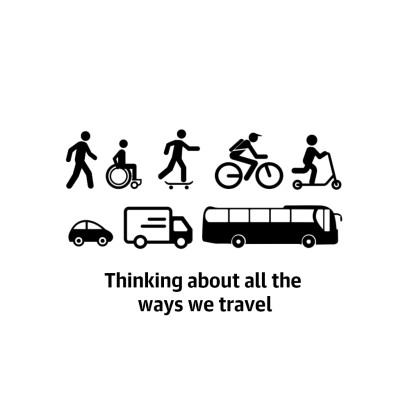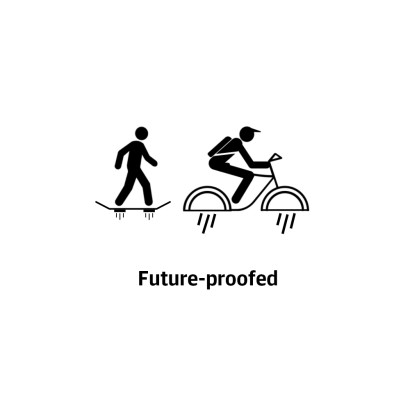Explore the network
The map below shows the network, and includes the changes made in response to feedback.
The bike and scooter network will connect suburbs to the city centre and destinations like the hospital and waterfront, helping to get people of all ages and abilities from where they live to where they work, study, shop and spend time.
There will be:
- 166km of connections for people riding bikes, scooters, and skateboards
- 155,000 of us living within a five-minute ride of the network.
Bike network map
Key
Future bike network route
Bike network built/being built
Our guide to developing the network
We've chosen these particular streets to create a joined up network. The network principles will guide us as we develop the routes to be the best they can be.
Two different approaches
Swift action – interim changes
The bike network plan is ambitious. To get this installed within 10-15 years and start changing how we get around, we must act swiftly.
So more people can ride, scoot and walk more places safely sooner, we’re trying new ways of doing things that we can change it if we don't get it quite right.
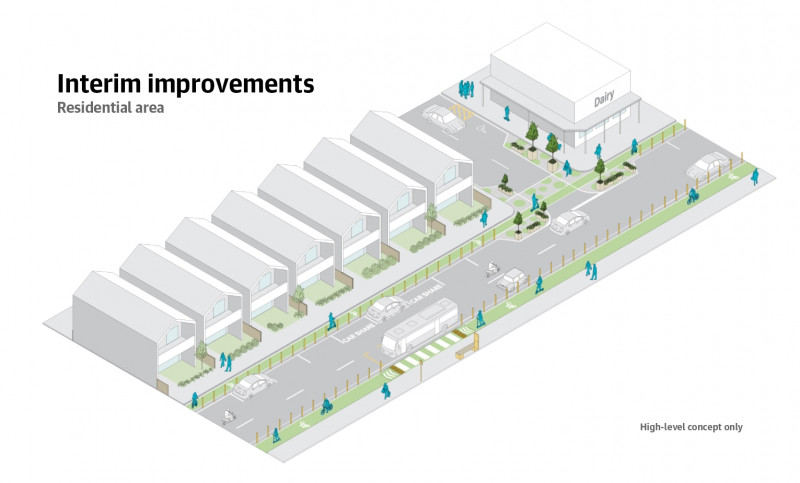
We’ll be using lower-cost and adaptable materials so people can try things out, tell us what they like or would change, and help to design permanent solutions.
This approach means we can get more of the bike network and connections in place relatively cheaply and quickly for the time being until permanent changes can be made in the future. These types of installations will not always be pretty but will serve a purpose.
Councillors gave the go-ahead in September 2021 for work to start on these routes as quickly as possible, in advance of permanent upgrades that will happen as part of Let’s Get Wellington Moving’s plans.
- Newtown to the city via Adelaide Road and Kent/Cambridge terraces to the waterfront
- the Botanic Garden ki Paekākā to the waterfront via Bowen Street
Permanent changes
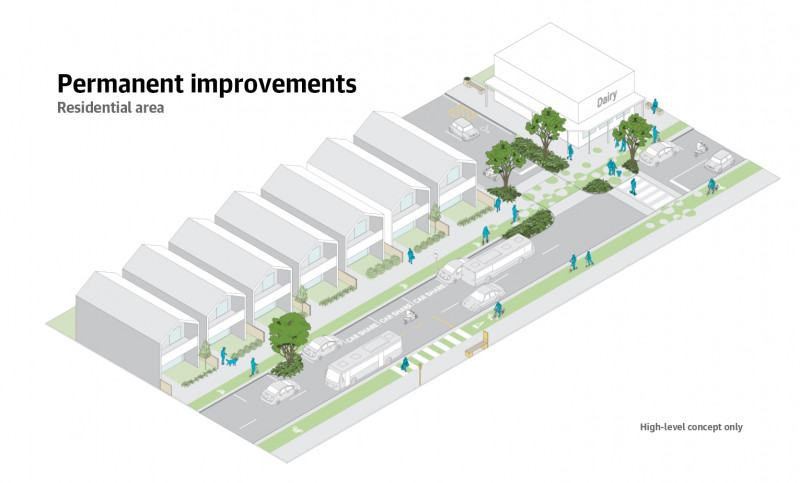
The bike network plan includes finishing what we have started in the east between Miramar and the central city around Evans Bay, and the upgrade to The Parade in Island Bay.
In the right spots, we’ll skip the interim step and make permanent improvements. There could also be a mix of interim and permanent changes as part of the same project. Changes at busy intersections with traffic lights, for example, would most likely have to be permanent and the more straightforward sections installed more quickly.
Interim installations could be in place for 1-8 years before permanent changes are made. Some of these will happen as part of larger transport changes such as mass rapid transit and bus priority or other Council projects and upgrades.
How we'll manage parking
As the city grows, we want our streets to be more pleasant and inviting rather than for the storage of private vehicles. In narrow streets, and tight spots, there will be less space for on-street parking. People may have to park further away from their homes, but they will have easy access to safe bike and scooting routes and public transport.
We don't yet know how parking will be impacted. To help prioritise access to parking for residents, businesses and others, we will use the Council's Parking Policy 2020. This may involve creating new residents parking spaces close to the route to ensure residents can access on-street parking near their homes. Mobility parking would be the priority. A mix of loading zones and short-stay parking may also be needed so deliveries, visitors and tradespeople can still park in the areas.
We'll be working with communities when we do more detailed designs of the streets.
Although we will be moving fast to install the bike network, we'll be giving people as much notice as possible so they can plan for how things will change.
